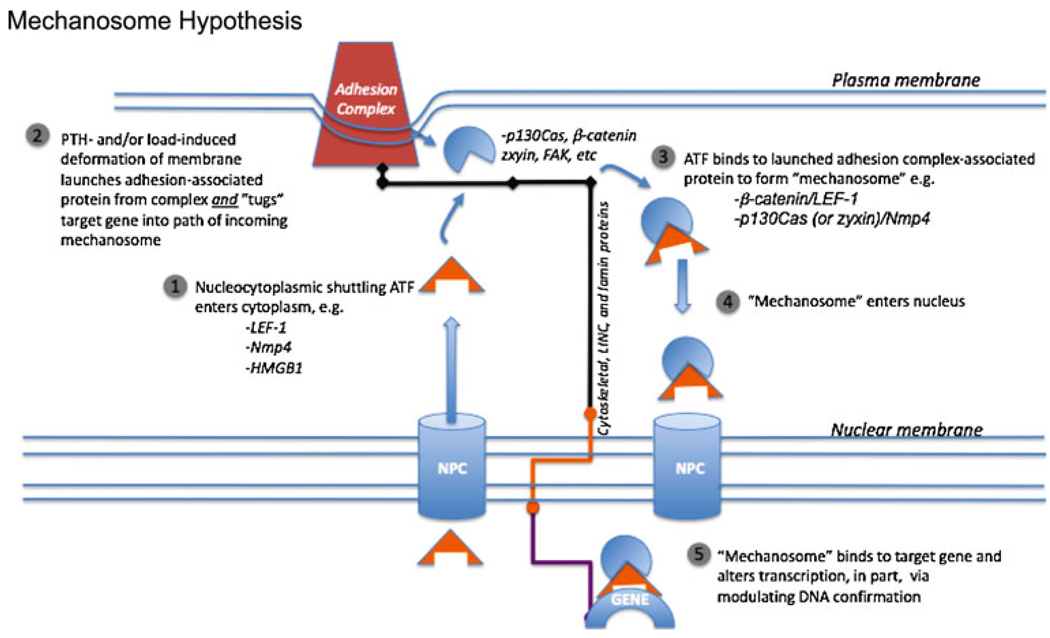Fig. 1.
The mechanosome hypothesis. Bending the bone from mechanical load or challenging bone tissue with parathyroid hormone (PTH) deforms the bone cell membrane and “launches” adhesion-associated molecules from adhesion complexes. These adhesion-associated molecules then complex with nucleocytoplasmic shuttling architectural transcription factors (ATFs). This mechanosome complex enters the nucleus and binds to a target gene that has been pulled into the path of the oncoming mechanosome by the solid-state scaffold comprised of cytoskeletal and associated proteins, LINC proteins, and lamins. The action of the ATF alters the DNA conformation of the target gene, thus altering the interaction between other transcription factors along the gene’s regulatory regions and changing its activity

